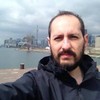Annons
Patricio Guzmán: Many things tie me to Canada from a cinematographic point of view. One of the institutions I admired most when I was young was the National Film Board because NFB films came to Chile at that time. There were a lot of Canadian documentaries that educated us. I remember the experimental films of [Norman] McLaren that played an important role for us. We didn't know anything about those types of films. I remember seeing a film about Paul Anka that we young Chileans watched at that time.
Annons
I think so, yes. I don't remember the name of the director. So the National Film Board along with Film Division in India, that were founded by [John] Grierson are part of the history of documentary film, so it's fundamental for us [in Chile].Later, I was able to come here for six months to Montreal to edit and complete a film for ARTE in France called Chile: Obstinate Memory. So that gave me the opportunity to get to know the NFB, to walk its halls like I had dreamed about, to see the photo of McLaren in the entrance and that was a beautiful moment.Didn't the cold bother you in Montreal?
No, not really, because remember, it also gets cold in Chile and there are cloudy climates. We know that darkness, too, but it's not like here where it's much worse. But a friend lent me a huge parka as well as his car, so I could drive to the National Film Board at 20 kilometers an hour because the snow was treacherous. I hadn't had that experience. I liked it there and I even thought about moving here. My wife came to visit for a month from Paris and she brought our cat that had never seen the snow before. We had a good time.I want to ask you now about The Battle of Chile. At the end of part one, we witness the death of the Argentinian cameraman Leonardo Henrichsen, through his own lens. Why did you choose to use that footage?
Because it's an extraordinary image to end a film with. I mean, the first part ends with a failed coup attempt and you see the arrival of tanks. You start to see people fleeing and the presidential palace is coming under siege. And then, all of a sudden, you see a military truck and soldiers firing and the person filming falls, it's a very strong way to end the film. It seemed legitimate to me to use it.
Annons
I would say something very simple. There are some military officers and soldiers in all parts of the world who are fascists, unjust, and inhuman, who are capable of killing a simple cameraman, who are capable of torturing and oppressing an entire society. You have to keep that in mind, always. I am not an enemy of soldiers in principle, but I confess that each time I come across one, I don't look at him because what they did in Chile cannot be forgotten.My parents are Chilean. They lived the coup and the dictatorship in Santiago. A friend of my dad's was one of the people disappeared by the Chilean armed forces. Your friend and colleague Jorge Müller Silva disappeared 41 years ago. In all these years, has anything been discovered about what happened to him?
No, in fact. We don't know what happened to Jorge. It's likely that his body was thrown into the ocean. In my latest film, The Pearl Button, I talk about the 1,400 people that were thrown into the ocean. It's possible that he was buried in the yard of an army regiment and that his body is still there in a mass grave. But we don't know for sure. And if you can believe the turns of life, Jorge's father came to Chile to escape the Nazis in Germany because he was Jewish. And then his son becomes a victim of Latin American fascism.There are a couple of themes developed in The Battle of Chile, that of resistance and that of revolution. Here in Canada, there are different movements taking shape, including a student movement in Quebec and resistance to the oil industry and pipelines. What do you make of those movements? What do you think they can learn from Chile's history?
I believe that those movements are the ones we can learn from, like the Indignados in Spain, or [the student movement] in Chile. I'm talking about informal movements, without formal political parties behind them, but groups, archipelagos of people with concerns who unite or break apart, but that walk together. And taking politics into your own hands like that seems like a legitimate path to me.It's like in documentary film. Don't wait for television companies to give you money. Grab a camera, make your film, and send it to festivals because TV won't listen to you. They keep making stereotyped programs that we already know. They don't dare take on essential issues. But we do.So, the students and the protesters here are within their legitimate rights to form a human river of opposition to conventional politics. We've had it up to here with conventional politics and we have to change it, at least a bit.Thank you very much for your time and for being here with us.
Thank you and I celebrate that this channel exists [VICE] and hope that it keeps fighting for these popular struggles wherever intelligent people live.
